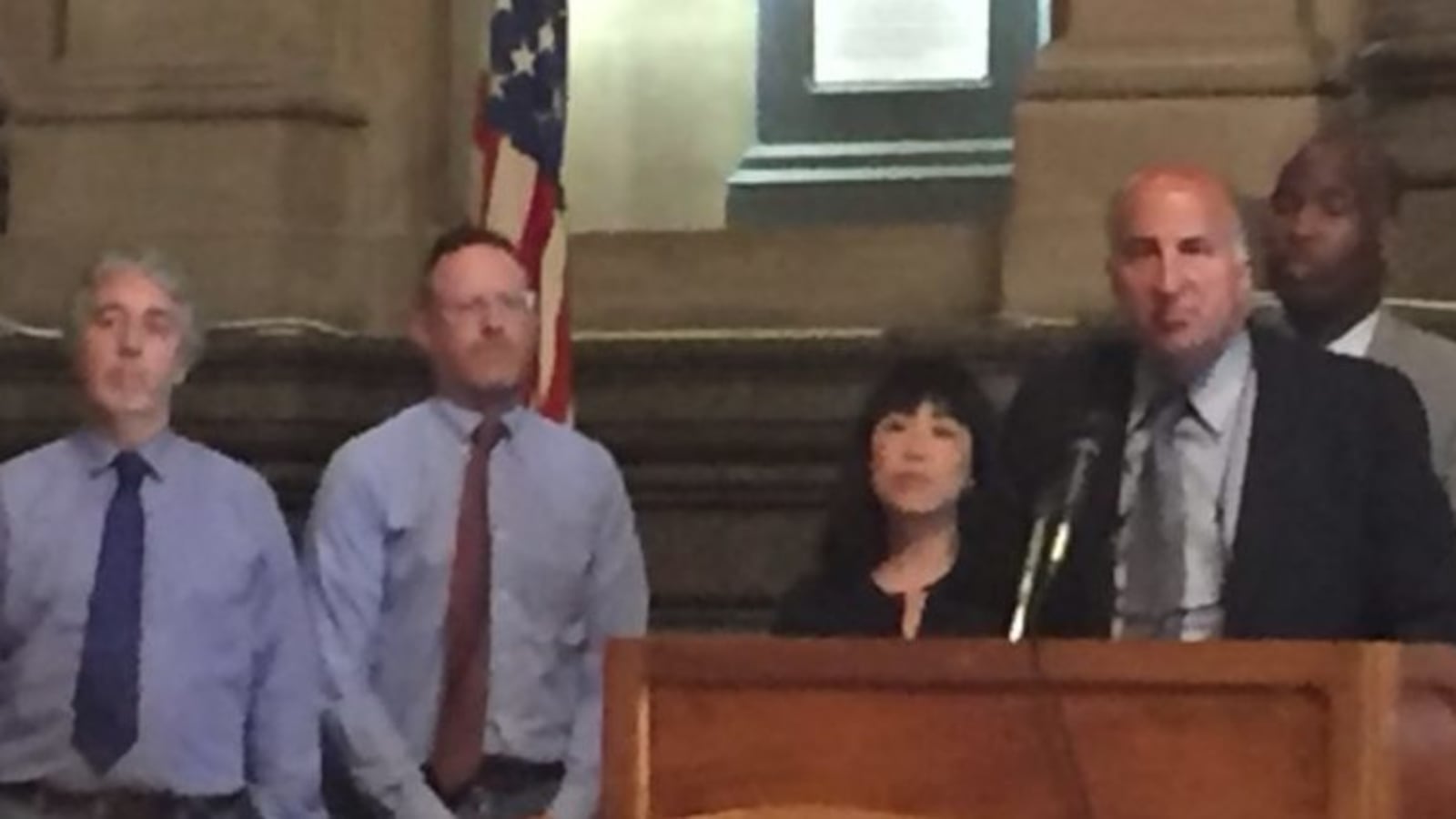This article was originally published in The Notebook. In August 2020, The Notebook became Chalkbeat Philadelphia.
City Councilman Mark Squilla has introduced a bill that aims to protect Philadelphia students from hazardous lead paint in their public schools.
The bill would require parents, teachers, and community members to be notified about lead paint in schools and would require the District to make test results publicly available. It would require lead paint to be removed in a timely manner and using best practices.
Squilla’s bill is co-sponsored by Council members Derek Green, Helen Gym, Cindy Bass, and Bobby Henon.
David Masur, executive director of Penn Environment, said the School District needs to move faster in addressing lead paint in schools if they want to properly help students.
“They started in January,” Masur said. “We’re six months in, and they haven’t finished one school. There’s 200 schools. You can’t do a school every year.”
At a City Council meeting in January, Danielle Floyd, the chief operating officer of the District, told Council members that the average age of the District’s buildings is 70 years, with dozens constructed before the 1978 federal ban on lead-based paints. She said that the District already requires paint and plaster inspections as part of the federally mandated annual asbestos reports.
Masur said that although more money is needed to deal with a lot of major issues with aging school buildings, some of these changes will not require a budget increase.
“I think we’d all agree that the District needs more money. We can’t rely on Harrisburg; we can’t rely on Washington, D.C.,” Masur said. He said he hopes the bill will pass by the fall.
Jerry Roseman, an environmental scientist with the Philadelphia Federation of Teachers who has been inspecting facilities for 32 years, said that the proposed legislation is a good first step, but that there is more the Council should do to solve the problem.
Roseman said: “This legislation is focused on a hazard in a material, paint, or water – in this case, lead – but there are a myriad of hazards that are very significant, and there are underlying structural root-cause problems that need to be addressed.”
He said that a task force should be set up “with some public involvement that would work to do joint planning, priority-setting, and decision-making. That has to be done – otherwise, the money alone won’t do it.”
Roseman estimates that a deep cleanup of existing lead dust, asbestos dust, mouse droppings, pest intrusion, and the inside of ventilation systems in all school buildings would cost a couple of million dollars. Doing this would not deal with structural issues, but would slow down the immediate risks posed by lead dust and paint in school buildings, he said.
The District recently announced a plan to improve conditions in 46 school buildings over the summer. The project includes lead-paint remediation and cleanup, HVAC repairs, asbestos abatement, and maintenance projects.
District spokesman Lee Whack said, “Students and families deserve better buildings.”

